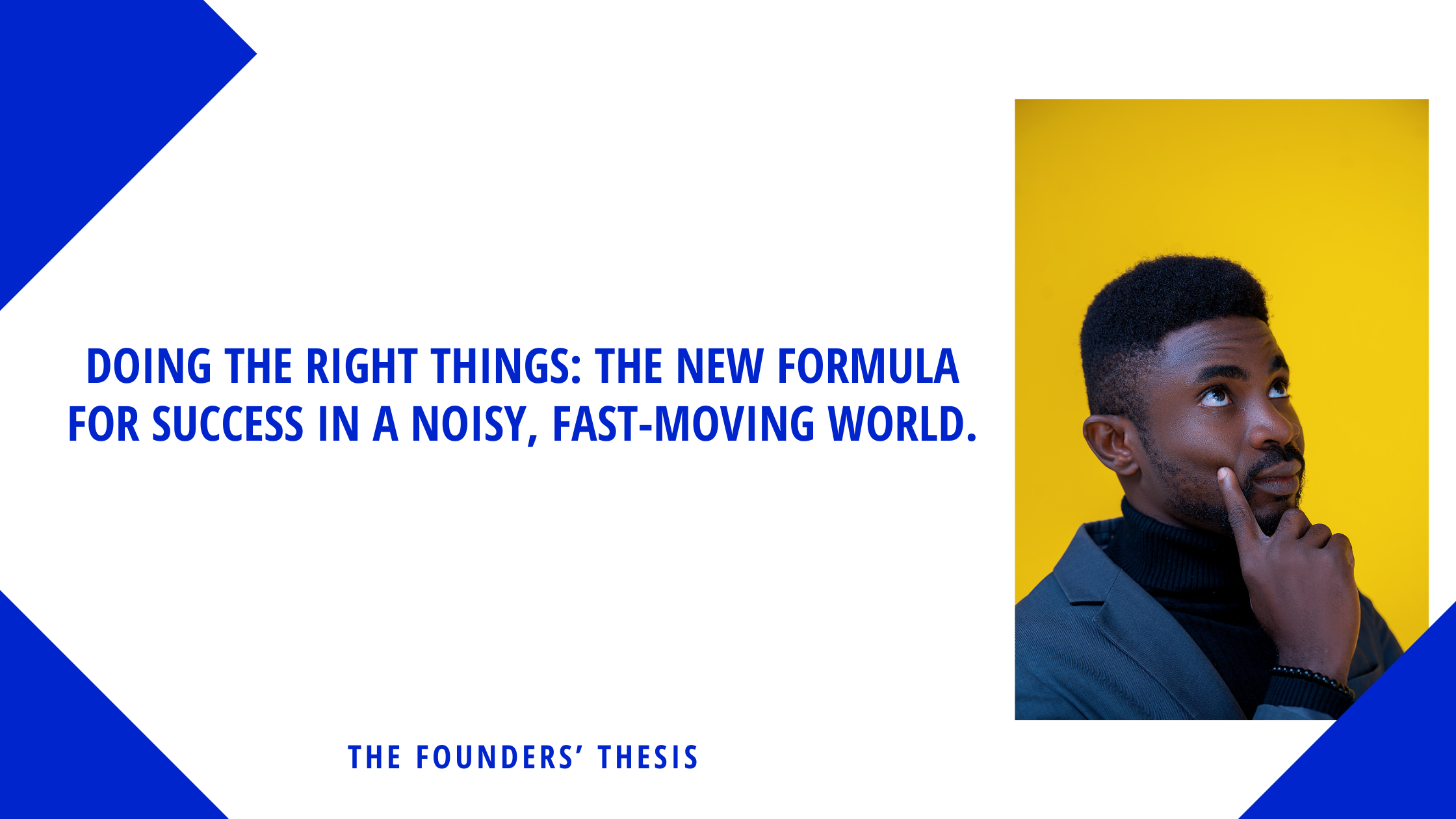In today’s hyperconnected, hypercompetitive world, success doesn’t necessarily belong to the loudest voice in the room or the person with the fanciest credentials. It belongs to the doers. The executors. The networkers. The fast movers.
More specifically, it belongs to those who commit to:
- Right actions over empty speeches
- Speedy execution over over-analysis
- Strategic networks over siloed isolation
These three pillars form a new-world framework for results-driven leadership, entrepreneurship, and impact creation. Let’s unpack them—using hard data, global trends, and economic realities that are shaping success today.
1. Right Actions Over Speeches: Why Talk is Cheap in the Execution Economy
We’ve entered the era of the Execution Economy—where outcomes, not intentions, drive value.
Talkers are everywhere. Social media has democratized soapboxes. Everyone has an opinion, a podcast, or a Twitter thread. But value is created not by noise—but by action.
Real-World Data
- According to a Forbes Insights report, 82% of executives say strategic decision-making is hindered by too much talking and not enough doing.
- A McKinsey survey of 2,500 global leaders found that leaders who focus on action over meetings deliver 30% more impact.
- In the nonprofit sector, a study by The Bridgespan Group revealed that only 20% of nonprofits translate strategic goals into measurable execution plans—leading to donor fatigue and stagnation.
Economic Cost of Inaction
In government and development work, policy paralysis is a classic example of “speech over action.” Nigeria, for instance, has had over 15 national development plans since independence. Yet the country ranked 157th in the UN Human Development Index (2023)—a sign of a disconnect between strategy and tangible action.
Case Study: Elon Musk
You can hate him or love him, but Musk exemplifies action-oriented leadership. While competitors debated the ethics and feasibility of electric vehicles, he built Tesla. While governments discussed space privatization, he launched SpaceX. As of 2024, Tesla’s market cap hit $760 billion, while most traditional automakers are still trying to scale up their EV lineups.
Bottom line? Talk doesn’t move mountains. Actions do.
2. Speedy Execution Over Endless Analysis: The Cost of Waiting
Paralysis by analysis is the silent killer of great ideas.
The desire to get things “perfect” often slows down initiatives to the point where they miss the window of opportunity. In today’s fast-moving global economy, speed is a competitive advantage, not just a logistical metric.
The Numbers Don’t Lie
- A BCG report revealed that fast executors grow revenue 2x faster than their slower counterparts, even with similar strategies.
- According to Deloitte, organizations that respond to market changes within 30 days are 3 times more likely to outperform their peers than those that take 90 days or more.
- A 2021 KPMG Global CEO Outlook found that 67% of CEOs feel their organizations are too slow to act on digital transformation.
The Agile Advantage
The Agile methodology—born out of the software world—is now infiltrating every sector from healthcare to education to finance. Why? Because it promotes rapid iterations over perfection. It’s built on the principle: “Start small, fail fast, learn fast, scale faster.”
Organizations that embrace agile principles see:
- 60% faster time-to-market
- 30% increase in team productivity
(Source: Project Management Institute, 2022)
Case Study: COVID-19 Vaccine Rollouts
Moderna developed its first mRNA COVID-19 vaccine candidate within 2 days of receiving the virus sequence in January 2020. While others were caught up in lengthy trials, Moderna moved fast, iterated fast, and became a global pharmaceutical powerhouse—reaching $18.5 billion in revenue in 2021, up from $60 million in 2019.
Speed literally saved lives—and created massive economic value.
Speed = Opportunity
The African tech ecosystem shows a similar pattern. Startups like Flutterwave and Paystack didn’t wait for regulatory perfection. They moved fast, created value, and attracted global attention. Flutterwave is now valued at $3 billion, and Paystack was acquired by Stripe for $200 million—because they executed.
Conclusion: If you wait until you’re “ready,” someone else will do it faster—and eat your lunch.
3. Building Strategic Networks Over Staying Siloed
The lone genius myth is dead. In today’s knowledge economy, networks amplify success.
Whether you’re a founder, policymaker, student, or social entrepreneur, your ability to build strategic alliances—not just contacts—can accelerate your progress exponentially.
The Data on Networks
- According to a LinkedIn study, 85% of all jobs are filled through networking—not traditional job boards.
- The Global Entrepreneurship Monitor (GEM) reports that startups with strong international and local networks are 4x more likely to survive past year two.
- A Harvard Business School study showed that “superconnectors”—people who build bridges across diverse fields—are 3x more likely to lead industry-changing initiatives.
What Strategic Networking Looks Like
- Not just LinkedIn connections—but mutual value collaborations
- Not just mentorship—but peer-to-peer learning circles
- Not just partnerships—but joint ventures with aligned vision and values
Case Study: Y Combinator
More than just an accelerator, Y Combinator is a network. A family. A tribe. Its alumni include Dropbox, Airbnb, Stripe, and Reddit. These startups didn’t just raise capital—they plugged into a support system that offered wisdom, mentorship, press connections, and customer access.
The result:
- Y Combinator-backed companies have a combined valuation of over $600 billion.
- Startups that go through YC are 5x more likely to reach Series A funding compared to non-YC startups.
Global Development Insight
Networks are also transforming international development. The UN SDG Partnerships Platform connects thousands of actors across sectors. Research shows that multi-stakeholder partnerships are 33% more successful in reaching development targets than solo actors (UNDP, 2021).
Silo is suicide in the age of collaboration.
Let’s Zoom Out: The Macroeconomic Implication of Doing the Right Things
When we aggregate these principles—action, speed, and collaboration—they don’t just influence personal or organizational growth. They impact national development and global competitiveness.
Consider the World Economic Forum’s Global Competitiveness Index:
- Countries that prioritize innovation, fast policy implementation, and stakeholder engagement consistently outperform those bogged down by bureaucracy and internal silos.
- Singapore, for instance, ranks #1 in public sector agility, and also leads in GDP per capita in Asia.
Meanwhile, African nations struggling with project delays, weak execution cultures, and isolated silos lose up to 40% of potential GDP growth annually (African Development Bank, 2023).
The global economy rewards velocity, collaboration, and execution. Period.
Final Takeaways: The New Success Trifecta
In this age of volatility, the formula for real-world success—whether you’re a leader, a builder, or a changemaker—is deceptively simple but radically effective:
Do the Right Things:
| Principle | What It Means | Why It Matters |
|---|---|---|
| Right Actions | Move beyond rhetoric. Deliver value. | Value is tied to results, not opinions. |
| Speedy Execution | Launch, learn, and iterate fast. | Speed is the new currency of growth. |
| Strategic Networking | Collaborate with purpose. | Relationships amplify outcomes. |
These aren’t “soft skills.” These are survival skills for the modern age.
If you’re still caught up in endless brainstorming, talking about your plans, or trying to do it all alone—it’s time to shift gears.
Because the world doesn’t wait.
Written by Oluwatosin Philip Oguntunde
Thought Leader | Project Manager | Founder, Opportunity Gist
References
- Forbes Insights, 2022 – “Strategic Decision-Making Survey”
- McKinsey & Company, 2023 – “Execution over Planning”
- BCG Global Report, 2022 – “Fast Movers Win”
- Deloitte Global Outlook, 2023 – “Speed and Agility as a Business Imperative”
- KPMG Global CEO Outlook, 2021
- LinkedIn, 2022 – “The Hidden Job Market”
- Harvard Business Review – “The Power of Superconnectors”
- MIT Sloan, 2021 – “Culture and Performance”
- African Development Bank, 2023 – “Economic Cost of Poor Execution in Africa”
- UNDP, 2021 – “SDG Partnerships and Multi-Stakeholder Collaboration”
- Project Management Institute, 2022 – “Agile Organizations Deliver More Value”
- Statista – Tesla Valuation 2024, Moderna Revenues, Y Combinator Alumni Data





